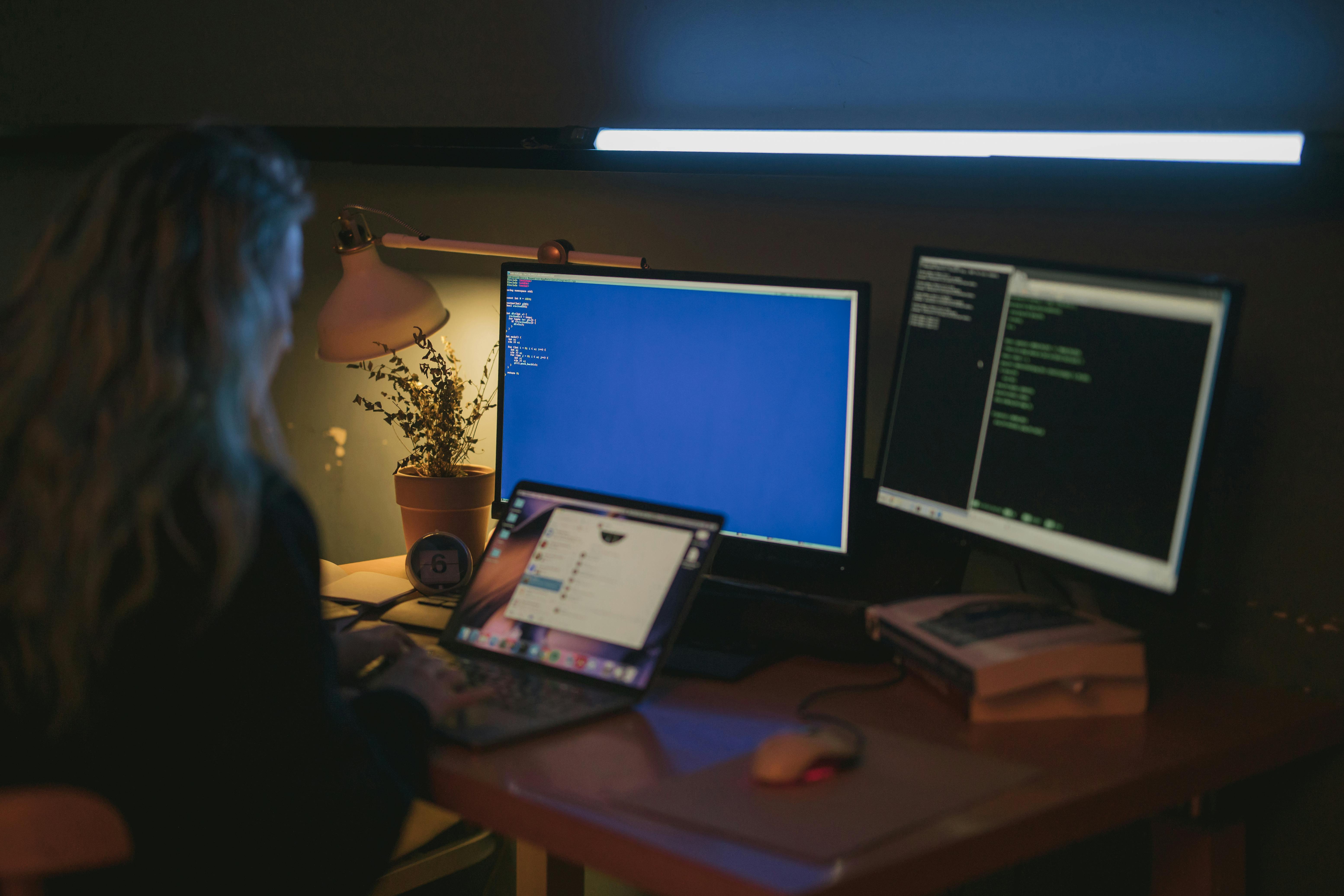From the earliest attempts at pattern recognition to today's sophisticated visual AI systems, computer vision has undergone a remarkable transformation. This technology, which enables machines to interpret and understand visual information, has become one of the most impactful applications of artificial intelligence, revolutionizing industries from healthcare to autonomous vehicles.
The Dawn of Computer Vision
The story of computer vision begins in the 1960s when researchers first attempted to teach machines to recognize simple patterns and shapes. Early systems could barely distinguish between basic geometric forms, relying on hand-crafted algorithms and limited computational power. These primitive attempts laid the groundwork for what would become one of AI's most transformative fields.
The initial challenges were immense. Unlike human vision, which effortlessly processes complex visual scenes, early computer vision systems struggled with variations in lighting, perspective, and object orientation. A simple task like recognizing a cup from different angles proved extraordinarily difficult for these early systems.
The Feature Detection Era
Throughout the 1970s and 1980s, computer vision evolved through the development of sophisticated feature detection algorithms. Researchers focused on identifying edges, corners, and textures as fundamental building blocks for image understanding. The Scale-Invariant Feature Transform (SIFT) and other landmark algorithms emerged during this period, providing more robust methods for object recognition.
"The challenge wasn't just teaching machines to see, but to understand what they were seeing in a meaningful way."
— Dr. David Marr, Computer Vision Pioneer
This era saw the introduction of computer vision into practical applications. Industrial inspection systems began using machine vision to detect defects in manufacturing processes, while medical imaging started benefiting from automated analysis tools. However, these systems remained limited in scope and required carefully controlled environments to function effectively.
The Statistical Learning Revolution
The 1990s and early 2000s marked a significant shift toward statistical learning approaches in computer vision. Machine learning techniques, particularly Support Vector Machines (SVMs) and ensemble methods, began to replace rule-based systems. This transition enabled more flexible and adaptable vision systems that could learn from data rather than relying solely on programmed rules.
The introduction of large-scale datasets became crucial during this period. Researchers recognized that training robust computer vision systems required vast amounts of labeled visual data. Early datasets like MNIST for handwritten digit recognition and later PASCAL VOC for object detection provided standardized benchmarks for evaluating and comparing different approaches.
Key Breakthroughs in Statistical Approaches
- Bag of Visual Words: Adapting text processing techniques to visual recognition
- Histogram of Oriented Gradients (HOG): Improved feature descriptors for object detection
- Viola-Jones Framework: Real-time face detection using cascaded classifiers
- SURF and ORB: Fast and robust feature extraction algorithms
The Deep Learning Revolution
The most dramatic transformation in computer vision came with the deep learning revolution of the 2010s. Convolutional Neural Networks (CNNs), first proposed decades earlier but limited by computational constraints, finally found their moment. The combination of powerful GPUs, large datasets, and improved training algorithms created a perfect storm for breakthrough performance.
The 2012 ImageNet competition marked a watershed moment when Alex Krizhevsky's AlexNet achieved unprecedented accuracy in image classification, significantly outperforming traditional methods. This breakthrough demonstrated that deep learning could automatically learn hierarchical features from raw pixel data, eliminating the need for hand-crafted feature engineering.
The CNN Architecture Evolution
Following AlexNet's success, researchers rapidly developed increasingly sophisticated CNN architectures:
- VGGNet (2014): Demonstrated the power of deeper networks with smaller filters
- GoogLeNet (2014): Introduced inception modules for efficient computation
- ResNet (2015): Solved the vanishing gradient problem with residual connections
- DenseNet (2017): Enhanced feature reuse through dense connections
- EfficientNet (2019): Optimized accuracy-efficiency trade-offs through compound scaling
Beyond Image Classification
As CNNs mastered image classification, computer vision researchers tackled increasingly complex visual understanding tasks. Object detection evolved from simple bounding box prediction to sophisticated systems capable of identifying multiple objects in complex scenes with pixel-level precision.
Object Detection and Segmentation
The development of R-CNN and its successors (Fast R-CNN, Faster R-CNN) revolutionized object detection by combining region proposal networks with CNN classifiers. Meanwhile, YOLO (You Only Look Once) introduced real-time object detection capabilities, making computer vision practical for time-sensitive applications like autonomous driving.
Semantic segmentation took visual understanding even further by assigning class labels to every pixel in an image. U-Net and fully convolutional networks enabled applications in medical imaging, autonomous navigation, and augmented reality that required precise pixel-level understanding.
3D Vision and Depth Perception
Modern computer vision systems have also mastered three-dimensional understanding. Depth estimation from single images, once considered nearly impossible, became achievable through deep learning approaches. Stereo vision, structure from motion, and LiDAR integration have enabled machines to build detailed 3D models of their environment.
Transformers Enter Computer Vision
The success of transformer architectures in natural language processing inevitably led to their adoption in computer vision. Vision Transformers (ViTs) challenged the dominance of CNNs by treating images as sequences of patches, applying self-attention mechanisms to visual understanding.
This development marked another paradigm shift, demonstrating that attention-based models could match or exceed CNN performance on many visual tasks. The ability of transformers to capture long-range dependencies in images opened new possibilities for understanding complex visual relationships and patterns.
Real-World Applications Transforming Industries
The advances in computer vision have translated into transformative applications across numerous industries:
Healthcare and Medical Imaging
Computer vision systems now assist radiologists in detecting cancers, analyzing medical scans, and monitoring patient conditions. AI-powered diagnostic tools can identify diabetic retinopathy, skin cancers, and other conditions with accuracy matching or exceeding human specialists in many cases.
Autonomous Vehicles
Self-driving cars rely heavily on computer vision for navigation, object detection, and scene understanding. Multiple cameras, combined with LiDAR and radar sensors, create comprehensive visual understanding of driving environments, enabling safe autonomous navigation.
Retail and E-commerce
Visual search, automated inventory management, and cashier-less stores represent major applications of computer vision in retail. Customers can now search for products using images, while retailers can track inventory levels and customer behavior with unprecedented precision.
Manufacturing and Quality Control
Industrial computer vision systems inspect products at superhuman speeds and accuracy, detecting defects that might be missed by human inspectors. This automation has improved product quality while reducing manufacturing costs.
Current Challenges and Frontiers
Despite remarkable progress, computer vision still faces significant challenges. Robustness to adversarial attacks, performance across diverse demographic groups, and understanding in complex, unstructured environments remain active areas of research.
Ethical Considerations
The deployment of computer vision systems raises important ethical questions about privacy, surveillance, and bias. Facial recognition systems, in particular, have sparked debates about their appropriate use and the need for regulatory oversight.
Environmental Impact
Training large computer vision models requires significant computational resources, raising concerns about energy consumption and environmental impact. Researchers are actively developing more efficient architectures and training methods to address these concerns.
The Future of Computer Vision
Looking ahead, computer vision continues to evolve rapidly. Multi-modal learning, which combines visual understanding with language and other sensory inputs, promises more comprehensive AI systems. Neural architecture search and automated machine learning are making advanced computer vision capabilities more accessible to non-experts.
The integration of computer vision with robotics, augmented reality, and Internet of Things devices will create new applications we can barely imagine today. As machines become increasingly capable of seeing and understanding our visual world, the boundary between human and artificial perception continues to blur.
Conclusion
The journey from basic pattern recognition to sophisticated visual AI represents one of the most remarkable achievements in artificial intelligence. Computer vision has evolved from a niche research area to a transformative technology that touches nearly every aspect of modern life.
As we look to the future, the continued advancement of computer vision promises even more revolutionary applications. From enabling robots to navigate complex environments to helping doctors diagnose diseases earlier, machines that can truly see and understand our visual world will continue to transform how we live, work, and interact with technology.
The story of how machines learned to see is far from over. Each breakthrough opens new possibilities, and each application reveals new challenges. In this ongoing narrative of artificial intelligence, computer vision stands as a testament to human ingenuity and our endless quest to create machines that can perceive and understand our world as richly as we do.

